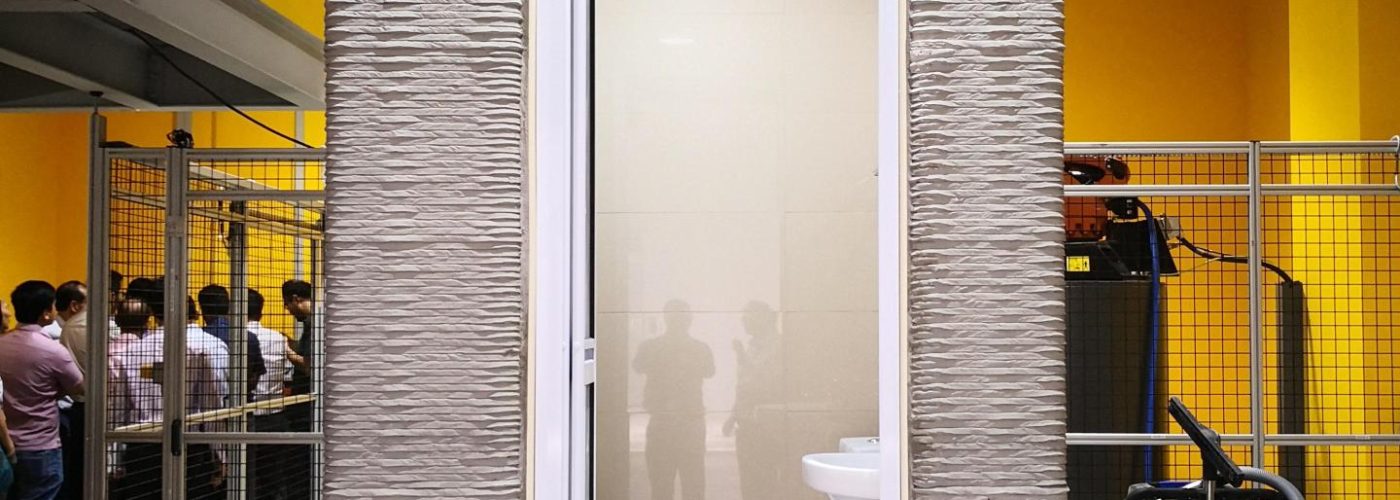Researchers from Nanyang Technological University, Singapore (NTU Singapore) have succeeded in robotically 3D printing an unfurnished bathroom pod in 12 hours or less. The technique uses a 6-axis robotic arm equipped with print nozzle for the special concrete mix and it could help firms build prefabricated bathroom units, or PBUs, about 30% faster.
PBUs are in high demand on government land Sale sites in Singapore, however the conventional method for these is concrete casting. With the new method, PBUs are 30% lighter than conventionally cast ones, but still as strong as conventional concrete. After printing, the bathroom pod is then furnished with toilet fittings, tiles and concealed drains and piping, which takes five days.
The technique was developed by a joint research team led by Assoc Prof Tan Ming Jen from NTU’s Singapore Centre for 3D Printing, in partnership with Sembcorp Design and Construction, and Sembcorp Architects & Engineers. They will now seek approvals for trials from the Building and Construction Authority of Singapore, and will investigate commercialising the technology through licensing or a spin-off company.
“The complicated shape of a PBU and its walls can be developed and printed at a faster pace to satisfy the needs of individual customers as no formwork or moulds are required, whereas conventional construction of PBUs with concrete or lightweight wall panels always limit the possibilities of design,” said Er Lie Liong Tjen, team lead from Sembcorp Design and Construction, and Sembcorp Architects & Engineers.
Researchers said 3D-printing PBUs could help manufacturers halve their production time, while lowering transport costs, carbon emissions and materials wastage.
“By being able to print-on-demand, companies can save on their inventory costs as well as manpower costs, as they don’t have to hold as much stock and their workers can be redeployed to do higher-level tasks. This approach improves the safety of the workplace, since robots are doing the construction of the bathroom unit,” Prof Tan said.
The printing of the bathroom pod was carried out in a single build using a 6-axis KUKA Robotic arm, which has a reach of about 6 metres in diameter. The concrete was then fed to mixers and pumped out of a nozzle mounted on the robotic arm, depositing the material layer by layer according to the digital blueprint.
To save material and achieve weight savings of up to 30%, the walls of the PBU were printed in a W-lattice shape, which lent additional strength to the final structure. The research team printed and outfitted two PBUs: one measuring 1.62m (L) x 1.5m (W) x 2.8m (H), which was printed in nine hours, and one PBU measuring 2m (L) x 2.6m (W) x 2.8m (H), which was printed in 12 hours.





